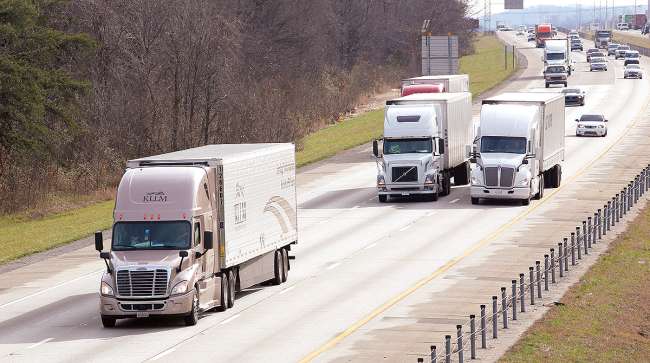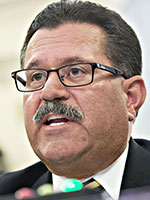FMCSA Chief Ray Martinez Tells Congress HOS Proposed Rule in ‘Final Stages’

[Stay on top of transportation news: Get TTNews in your inbox.]
WASHINGTON — A proposed rule meant to update hours-of-service guidelines for truck drivers will be announced in the near term, the country’s top trucking regulator told a Senate panel June 19.

Martinez
“We, I believe, are in the final stages. As you know, it’s a process,” said Ray Martinez, head of the Federal Motor Carrier Safety Administration, during a hearing of the Commerce Committee. “But, I really do believe that we are in the very final stages of that process, and I’m hopeful that it will be in short order. I hesitate to put a date certain on it.”
The long-anticipated proposed rule on HOS policy had a release date of June 7. Martinez explained the Office of Management and Budget is reviewing it.
To inform the potential efforts to update the policy, the agency received more than 5,200 comments. Throughout the process, regulators sought input on the shorthaul HOS limit, the HOS exception for adverse driving conditions and the 30-minute rest-break provision. The agency also collected input on its split sleeper-berth rule to allow drivers to divide required rest time.

Fischer
Several senators, such as Deb Fischer (R-Neb.), pressed Martinez on the proposed rule. They argued industry stakeholders had expressed concerns about its inflexibility.
“One of the primary issues that I’ve heard about from drivers and carriers relating to trucking regulations is the need for more flexible hours-of-service requirements,” said Fischer, chairwoman of the Transportation and Safety Subcommittee, which oversees trucking regulations.
Besides hours of service, Martinez noted that starting in January, the national clearinghouse of commercial drivers’ violations of drug and alcohol testing will start the collection of positive test results and refusals. After the clearinghouse has data for three years, employers will only need to check the clearinghouse for pre-employment and annual reviews, he explained.
“The clearinghouse improves safety by identifying drivers who have committed either drug or alcohol violations that would make them ineligible to operate commercial motor vehicles, until they complete the required return-to-duty process,” Martinez told the senators, in prepared remarks.
The FMCSA chief also suggested Congress proceed with a causation study similar to the Large Truck Crash Causation Study spanning from 2001 to 2003. That congressionally mandated effort examined reasons for serious crashes that involved large trucks.
“In the more than 15 years since the original study, many changes in technology, vehicle safety, driver behavior and roadway design have occurred that affect driver performance,” Martinez said.
Federal policymakers are readying the reauthorization of a 2015 highway law that expires in the fall of 2020. And, with the industry’s steady adoption of autonomous technology, Committee Chairman Roger Wicker (R-Miss.) insisted drivers would maintain essential roles in the movement of goods via trucks. Congress has missed opportunities in recent years to advance legislation on autonomous vehicle policy.
“Until such time as autonomous vehicles are pervasive on our roads and used commercially, there is still an urgent need for truck drivers to help move our nation’s goods,” the chairman said.
Additionally, Wicker called on FMCSA to update the panel on a three-year pilot program evaluating the feasibility of allowing drivers with military experience ages 18-20 to drive trucks across state lines. At that age, they are allowed to operate trucks intrastate.

Cantwell
Washington Sen. Maria Cantwell, the panel’s ranking Democrat, said she supports the adoption of safety features, such as automated braking, as well as enhancements in freight connectivity. Ensuring robust funding to boost access to freight corridors is crucial for the nation’s economy, she explained, noting, “I hope that we’ll look to increase levels of funding to meet the strong demand for these [freight] programs.”
She also touted her party’s efforts to advance severe-weather resilient infrastructure measures. Since the start of the congressional session, a significant number of Democrats have promoted measures that would guarantee infrastructure projects are designed to withstand the force of severe storms and other natural disasters.

